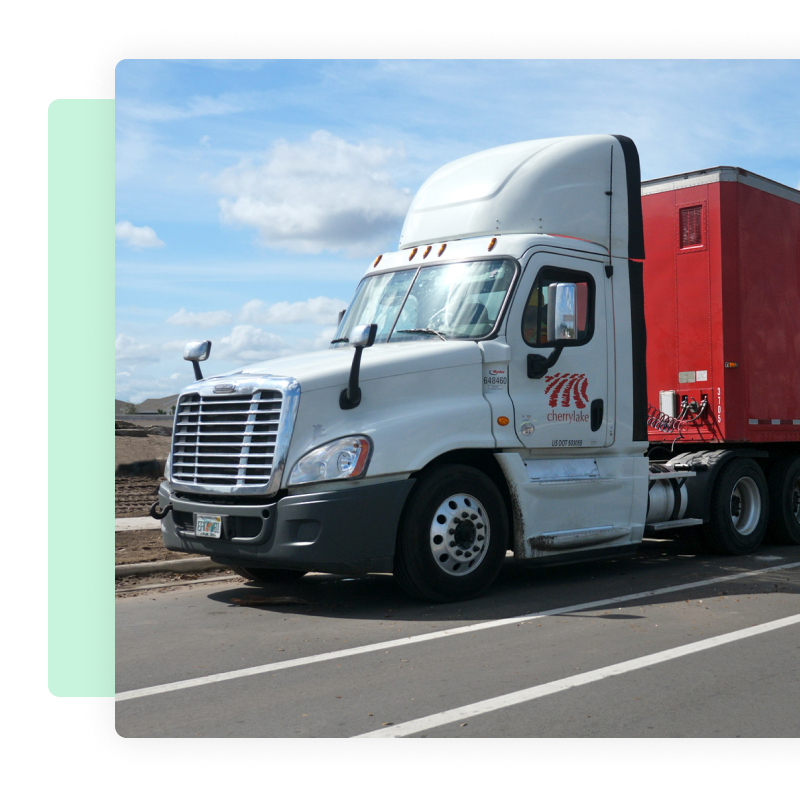Since the onset of the pandemic, the trucking and freight industry has faced a number of challenges. Conflicts in the Middle East are hindering access to the Suez Canal and the recent — though short-term — dockworker strikes caused backups and delays in freight movement. The strike has been delayed until January 15, 2025 to allow for more time to negotiate, so those same challenges could become an issue should an agreement not be reached by that time. On top of that, some experts are even suggesting that the industry is teetering on the edge of a recession due to capacity outweighing demand. So, what are current trucking industry trends and what could be on the horizon?
Well, according to ACT Research, the “most recent Class 8 tractor order and sales data show a decline in equipment additions, a requisite for rates to improve meaningfully. Though fleet capacity growth has delayed the recovery in rates, the improving supply/demand balance suggests the worst is in the rearview, and the cyclical recovery should continue.”
Top 3 Trucking Challenges and Strategies for Overcoming Them
1. Overcapacity and Rate Declines
A trucking industry forecast for 2025 surfaces several issues to watch for. Throughout this year, the industry has been grappling with overcapacity, which has led to a decline in freight rates. “The freight market continues to be characterized by overcapacity, and with private fleets engaging in spot activity more than in past cycles, spot rates remain only slightly above the late-2023 lows,” according to ACT Research. “The Pricing Index ticked down 0.6 points in June to 47.9, remaining at close to neutral levels as freight rates continue to hover just above cycle low levels. Excess capacity additions by private fleets have extended this down cycle to the longest on record, as the scarring they incurred during the pandemic changed their tune on equipment purchases.” This has put pressure on for-hire fleets, leading to the worst profitability in 14 years for publicly traded truckload carriers.
The Solution: Strengthen Capacity Management
To adapt to the challenge of overcapacity, fleets need to be strategic about managing their assets, specifically when it comes to rightsizing and determining optimal replacement windows to reduce or delay truck and equipment acquisitions. Doing so can potentially lead to an improvement in freight rates and a reduction in overhead costs.
2. Rising Operational Costs
The operational costs in the trucking industry have continued to rise, though some cost centers have seen an easing this year. The American Transportation Research Institute (ATRI), in their 2024 trucking cost breakdown, reported that trucking costs reached new heights in 2023, with the marginal cost of trucking hitting $2.270 per mile. “Carrier fuel and tire expenses were trending downward in Q1 2024 as were used Class 8 truck prices,” according to the report. “The repair and maintenance trends observed in 2023 persisted in early 2024 and point toward another year of only moderate increases in that cost center.”
The Solution: Cost Control
As truck fleet operating costs fluctuate, fleets should focus on cost control, especially in the larger cost centers like fuel and maintenance. Leveraging trucking fleet software can help fleets implement fuel-efficient practices and optimize fleet-wide efficiency. The ability to collect robust data enables fleets to determine high-cost vs. value assets, ensures high inspection and maintenance compliance rates and can significantly reduce unnecessary downtime.
2025 Trucking Industry Forecast
Between a potential stabilization in the market and a rebalance of capacity issues, there’s a lot going on in the trucking industry. Take a look at our 2025 Trucking Industry Forecast to evaluate how things are panning out.
Learn more3. Driver Shortages and Retention
Driver shortages and retention challenges are proving an ongoing issue in the industry. “Many economists project the freight market to continue to soften in the first and second quarters of 2024 before rebounding in late 2024, so companies should remain focused on retaining their best employees,” according to Insurance Journal, which also lists rising cargo theft and DOT rule changes among its list of trucking challenges for 2024. “With turnover in some trucking industry segments as high as 85% to 90%, fleets have invested in retention bonuses to keep their best drivers. In fact, the average retention bonus has climbed almost 90% over the past four years to $1,272.”
The Solution: Invest in Employee Retention
Retaining skilled drivers is crucial, but making the company appealing to job seekers can provide a safety net in times of labor shortages. Fleets investing in retention strategies, such as offering competitive wages, benefits and bonuses, are likely to see a better outcome than those trying to cut costs in this area.
Onward and Upward
Trucking challenges remain top-of-mind for many in the industry, and the chaos of this year’s election is only adding fuel to the fire. The future always holds some level of uncertainty, so maximizing operational insights is key to keeping trucks on the road. Taking every advantage available to control costs and maintain efficiency and productivity can help ensure your fleet succeeds, especially during rough patches. Trucking fleet management and optimization platforms are a great way to dial into high-cost centers and inefficient processes.
While the trucking and freight industry is expected to face a mixed bag of challenges and opportunities, fleets that focus on strategic capacity management, cost control and driver retention will be better positioned to overcome these challenges and emerge stronger in the coming years.
A fleet solution for optimized operations
Manage your trucking fleet operation in a centralized, secure software, and link up your favorite ELD provider to track every aspect of your fleet from drivers to expenses and productivity.
Learn more


